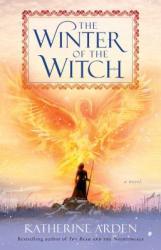
In everyone’s reading adventures they find that there are those books they come across that they like, some they love, and then there are those books that resonate so deeply, that you say to yourself and all who will listen “this is why I read.” Its not just the stunning world building, the lyrical prose, or the deep character development, but something more, that speaks to your soul, about who you truly are or what the world around you is really like. Something that can’t always be expressed through spoken word or any other means, expect through story. This is what Katherine Arden’s The Winter of the Witch has done for me.
Picking up right where The Girl in the Tower had left off with Rus in shambles and the people needing to blame someone for what happened to their city they naturally turn to Vasya. I am not going to try to explain the rest of the plot because so much happens. But suffice it to say that in this one there is so much more wintery magic, more of the winter king, everyone’s favorite hero, and so much more action and adventure I could barely keep up.
This book flows seamlessly from the 2nd to the third one without taking a single breath. And the blending of the historical and fantastical is so complete it totally had me believing that 13th century Rus existed side by side with this wintery magical world called midnight and had me longing to time travel so I can visit it. With mysterious and magical midnight roads, it’s chiriti and spirits of all types, its magical house, and a lake on the edge of worlds, it’s flying horses, its river monsters and so many other fairy tale elements this book appealed to me on so many levels. It really awakened that inner child in me, that I think is in all of us that loves fairy tales and magic, wants to be accepted and loved but also wants to have purpose and feel needed. Their was just so much about this fable and Vasya as a character that spoke to my soul that it’s hard to express it all in one measily review.
Vasya also grows so much into her power in this tale. She really discovers her identity and the book delves not only into more of who she and is becoming but also who her family is and their magical legacy. I really grew to love Vasya as a character and her determination to never give up even in the most difficult of circumstances, her love of her city and people, her strength, and how she doesn’t just accept her circumstances but fights for better things and saves herself and those around her.
Can we also talk about Vasya and Morozko relationship for a second. I love their relationship and think it is a great representation of what love in real life is often like. I love how they grow into their relationship, and that she loves him but doesn’t always love everything about him or the choices he makes. It proves what is often true about love that it is not always magic and sunshine and unicorns but can often be difficult. It often requires sacrifice and one to be selfless enough to make sacrifices. It also requires each partner to live with each other in daily life with all their imperfections no matter how much it annoys and frustrates you. I love the fact that, though Morozoko is this ancient powerful being, his character also has imperfections and issues and his own sorrows that Vasya has to learn to live with. I also love that they save each other in more ways than one, and in the scenes when they do connect it is often tender and beautiful and heart wrenching all at the same time.
Beyond the character development, the story itself is filled with lush and atmospheric imagery, beautiful and lyrical prose, and quirky and whimsical details that speak to my heart childhood heart. I also, being a history major, really appreciate the research done for this series with regards to historical detail. In history we call this establishing historical context, putting the person we are studying in their historical environment within the whole of history. It blended Vasya’s magical world and grounded her in a specific place in history seamlessly.
All this to say I loved this book and this series! Both are a solid 5 stars! And when it comes out next Tuesday Jan 8, run, don’t walk to your local library or book store to get this beautiful fable and complete your collection of one of the best series of all time. Seriously it’s up there with CS Lewis and Tolkien for me ya’ll. Thank you to Edelweiss and Del Ray for my Digital Review Copy for review!
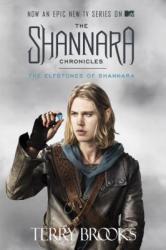
Back in 2016, I saw advertisements for a TV show adaptation of the original Shannara trilogy, likely trying to cash in on the success of Game of Thrones. While I never watched the show, I remembered enough from these trailers that I was able to recognize that the plot of the first book in the series, The Sword of Shannara , was not the plot of the series. However, when I started reading the next book in the series, The Elfstones of Shannara, suddenly memories of the TV show came to mind. Having finished this book, I can see why the TV show wanted to start here.
I didn’t particularly care for the derivative Sword of Shannara, as it seemed to steal all its ideas from The Lord of the Rings. While The Elfstones of Shannara still appears to take influence from this quintessential epic fantasy, there are enough other fantasy tropes thrown in to make it feel at least somewhat more original. Plus, the strength of the story in this book merely highlighted how unnecessary The Sword of Shannara was, as it basically threw away all the main characters from that book, relegating them to “distant grandfather” status and maintaining the only truly interesting character, the druid, for this book.
The strength of The Elfstones of Shannara comes from its main plotline that finds a boy and girl on a quest to save a magical tree that is dying, thus allowing demons to re-enter the realm. All the other side stories, like the battle/war that was happening, and all the familial and political drama that went with it, I could have done without. Mostly, these minor characters and plots didn’t seem fleshed out enough for me to care. Alternatively, the main story was exciting and had pretty good pacing for a fantasy book that sometimes spends too many words on descriptions and world-building that don’t matter.
A much superior follow-up to The Sword of Shannara, I give The Elfstones of Shannara 3.5 stars out of 5.

Coming from the author of "King Solomon's Mines" and creator of Allan Quartermain, you can expect a terrific turn of the century, adventure story. Written as the sequel to "She", "Ayesha: The Return of She" stands on its own, and I find it even more enjoyable than the original story (but "She" does make for a good prequel - as I read them out of sequence). Our hero Leo, sets out with his friend to seek out his long lost love. This leads them to the most remote of areas, across vast deserts, and over treacherous mountains. When they reach the empire of Kaloon, the Khania Atene swears that she is the woman Leo is searching for, but he is unsure, and wishes to consult with the mysterious Hesea, an ancient priestess of the mountain, who has sent for him. Atene will risk everything, even war with the people of the mountain, to keep Leo by her side, even though he wishes to see the Hesea. Is Atene the woman Leo is seeking? Who is the cryptic Hesea? What dangers await Leo and his friend, both in Kaloon, and on the mountain?
This story was originally published in a serialized form in 1904-1905, with gorgeous Art Nouveau illustrations. If you can find it, I highly recommend reading a reprint that includes the original illustrations. One of my favorite books of all time!
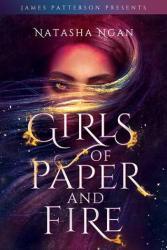
Every year one girl from the lowest caste in each of the 8 provinces is selected to be a Paper Girl - a concubine to the king. Usually, the girls choose to put themselves forth for the selection. But this year, there will be nine girls. Lei, the ninth, was ripped from her home by a General trying to curry favor with the King. And unlike the other paper girls, this was in no way a choice for her. As she learns more about her fellow Paper Girls and life in the palace, she becomes further disgusted with the caste systems and the concept of Paper Girls. And she'll do everything in her limited power to defy the king - even if it costs her her life.
Girls of Paper and Fire was awesome. I've been burned by heavily hyped diverse YA fantasy lately (Children of Blood and Bone, Mirage), but luckily for me, this one did not disappoint. The premise sounded fairly...gross for lack of a better word - a girl stripped from her home against her will to become a concubine to the king. You know there's going to be some unconsensual sex happening. And there was, but it was handled really well by the author. She takes a very sensitive issue and does not sensationalize it. In fact, its presented in such a way that women who have had similar experiences might find some solace in the book, which, if you read the Afterword, was clearly the author's intention.
Unlike some YA fantasy, this was a slowly paced book that was mostly about developing our main character. Lei really grew as a woman and a person throughout the course of the book. She stands up for her beliefs, herself, her body, even though it almost gets her killed. There's also romance, and its a slowly developed, realistic story of love in the worst of times. The worldbuilding was stunning - the setting was Malaysia inspired, and the formation of the three different castes and their traditions was well thought out and presented in such as way as to be simultaneously creepy and gorgeous. My two complaints are fairly minor: there were a few very predictable plot elements, and the writing occasionally leaned into too flowery territory. Otherwise, though, I loved it.
If you are looking for a feminist fantasy read with excellent worldbuilding and character development, you won't go wrong with Girls of Paper and Fire. 5 stars.
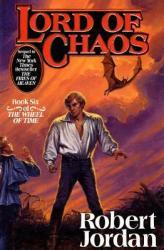
While the first five novels in the Wheel of Time series were near masterpieces in their own right, the sixth entry is where the series begins to peter out a bit. Whereas the previous novels were compelling high fantasy adventures, this one seems to exist in more of the vein of a drama. Intense magical battles and high stakes plots to unravel are here replaced with the female characters prattling on about the color and feel of their dresses, or complaining about men with each other. Additionally, there is an enormous cast of characters to keep track of, which does tend to drag the novel down and make it more confusing than it needs to be. True, this was also a problem in the the first five novels, but compounded with the sometimes boring plot and mundane female characters it becomes a much more noticeable problem. Most of the novel is people sitting around postulating for power and talking. However, there are some things to be appreciative of, such as the political intrigue, chapters from the Forsaken point of view, and the return to Shadar Logoth, but these things just don't help the novel in the long run. I would recommend it to anyone who has read the previous five books.
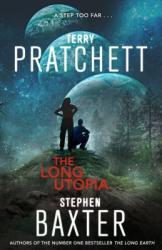
After the events that take place in The Long Mars , I was expecting the next book in the series, The Long Utopia, to be about the CEO of the Black Corporation and the settlement he established to help him live longer. Instead, I got a story that had little to no connection to the previous plots. That being said, at least there was a story with a projected conclusion instead of merely a series of random events that eventually led to the sudden destruction of some location (as had been the case up until now).
While I did appreciate some of the back-story for Joshua Valienté, there wasn’t anything in Joshua’s behavior or motivations in any of the previous books that indicated that he was even interested in learning about his past. I also was pleased that some of the “limitations” of this universe were brought back, or at least provided as a reminder to the reader. It honestly doesn’t make sense to me that these parallel worlds would have the kind of technology available to them without the use of iron. The fact that the material workarounds were never explained is probably the most frustrating part to me.
As I mentioned already, the stronger story in this book helped keep me invested in the characters, not only as they tried to figure out what was happening, but as they tried to determine how to stop it. Unfortunately, none of the consequences in this universe seem to hold any weight. Lobsang can “die,” but there are still plenty other versions of him around. The Next can be mostly exterminated, but then the next book just glosses over the attempted genocide. In the end, though, I can’t honestly tell you what the titular “Utopia” of this book was, and that’s disappointing.
A slightly above-average chapter in the Long Earth series, I give The Long Utopia 3.0 stars out of 5.
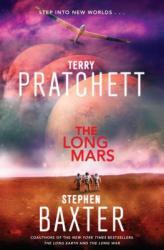
While the previous two entries in this series seemed to be disjointed in their writing styles, The Long Mars seemed to iron out some of these discrepancies . . . finally. In The Long Earth and The Long War , you could almost pinpoint the sections that Terry Pratchett wrote and the sections primarily written by Stephen Baxter. By The Long Mars, there are still a few moments of Terry Pratchett’s goofiness, but they are few and far between. Consequently, the narrative of The Long Mars seemed a lot more consistent than its predecessors.
Of course, this doesn’t necessarily mean that The Long Mars is absent of problems. While there was plenty of exploration of these parallel universes, the ones that were deemed necessary enough to describe didn’t add anything to the plot. In fact, I felt like this book could have been much shorter if these thought experiments that explored how parallel universes would function were cut out entirely. If these momentary breaks in the action were tied to critical moments or conflicts, then I could see their necessity. As they are right now, you could remove almost every one of them and still have the same basic story.
The scientist in me did like the broader examination of what to do with multiple universes, like easily visiting Mars. These concepts were touched on in the previous books, but now they felt a lot more fleshed out. Similarly, I felt like the characters were a lot more interesting, especially the dynamic between Sally and her father. Sure, there were probably a few too many plot lines to follow, but at least I cared about the characters now. I’m also not sure if the ending was supposed to mimic its predecessors, as that was one of my frustrations with The Long War: an almost identical ending to The Long Earth.
A significant improvement in the Long Earth series, I give The Long Mars 3.5 stars out of 5.
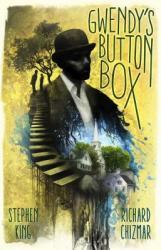
While most people think of Stephen King's book as being scary, this book was more suspenseful than scary. It is the story of Gwendy, a 12 year old girl who decided to run the suicide stairs in her neighborhood to lose weight before school starts. She meets a man wearing a black hat at the top of the stairs. This man calls her over by name and gives her a specialw box that will give her chocolate and silver dollars. The box has buttons on top and Gwendy can control what may happen by pushing one of the buttons. Once she takes the box, good things start happening in Gwendy's life. Gwendy becomes obsessed with the box and keeps it with her until after college, when she comes home one day to see a familiar black hat in her apartment. The story moves quickly and keeps you interested throughout the phases of Gwendy's life. If you are interested in Stephen King books but don't want to read anything too scary, this is a great book to start with.
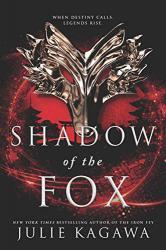
Every 10,000 years, an ancient dragon rises to give one mortal a wish (in exchange for their soul) and the world changes. Two characters, a kitsune-hybrid and a ninja, find themselves trying to keep the path to the dragon out of the hands of several interested and nefarious parties. Shadow of the Fox follows our heroes as they travel to and from different monasteries dodging monsters in their quest to protect ancient scrolls.
Shadow of the Fox was a ton of fun! It gave me Percy Jackson vibes, but was definitely for a slightly older audience and the mythology in this book was Japanese, which I found to be very cool. I liked both of the characters – the kitsune must hide her fox nature from her ninja travelling companion as he is a monster killer, and kitsune are a type of…if not monster, then non-human trickster. The ninja is trying to resist becoming possessed by the evil demon that occupies his sword. Their relationship is thus a bit fraught, but adds a really interesting dynamic. Their other travelling companion (a disgraced Samurai who spends most of the book amusingly drunk) provided some levity. Some of the mythology was completely new to me, which made for a engaging reading experience. I liked it enough that I read one of Kagawa’s other books, The Iron King, as well. If you enjoyed that one, you’ll likely like this – I found the formats to be similar, though I personally found the Japanese mythology more interesting than the fairies.
TLDR: This is a really entertaining and action packed fantasy for fans of Percy Jackson and Kagawa’s other books. I loved it, and am excited to get my own copy! 5 stars.
Thanks to Harlequin Teen and Netgalley for the eARC, which I received in exchange for an unbiased review. Shadow of the Fox is available now!

As I said in my review of Sourdough , I absolutely adored Robin Sloan's debut work, Mr. Penumbra's 24-hour Bookstore. Since Sourdough didn't necessarily sate my appetite, I found Ajax Penumbra 1969 to be a light snack that brought me back into the world created by Sloan. Acting as a bit of a short story/novella prequel to the first book, Ajax Penumbra 1969 still maintains the themes common in Sloan's work: mainly, the combination and juxtaposition of analog and digital technology. In this case, the reader just happens to come across this dichotomy in 1969.
Following the titular character from the first book, Ajax Penumbra 1969 gives the origins of this mysterious character as he searches for answers and eventually ends up in San Francisco at a little 24-hour bookstore. The following mystery and intrigue are what I would expect from such a story, but the inclusion of the budding technological aspects of the late 1960's helped to show that not only was this character finding his way to an eventual life filled with books, but technology's infancy already had much potential at this early stage of development.
It's a little difficult to say much about this short story/novella since it didn't even take a full two hours to listen to. At any rate, it's a fun little side story for those who had picked up Sloan's first work and fell in love with the ideas and characters presented therein. While not necessarily a book that most people would pick up and read without having already read Mr. Penumbra's 24-hour Bookstore, Ajax Penumbra 1969 is required reading for anyone like myself who has become enamored with Sloan's writing style over the last few years.
A fitting prequel to the events of Mr. Penumbra's 24-hour Bookstore, I give Ajax Penumbra 1969 4.0 stars out of 5.
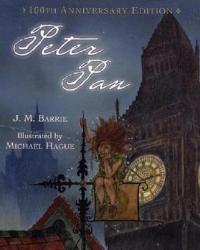
I LOVED this book! Although it was written a long time ago by an unsuccessful playwright, J. M. Barrie perfectly captured the imagination and creativity of young children. The reason he was disliked in his time was because he never really grew out of his kid-self. Which, I think, I think is where the inspiration for Peter Pan came, “the boy who never grew up”.
But anyways, Wendy and her younger brothers are born into a family that struggles financially but are obsessed with appearing rich to their wealthy neighbors… a common trend, even today. But Wendy and her brothers are whisked into a world where imagination runs wild-- the land that is hidden in all children’s minds, the one that is different for every child, Neverland.
What I love about this book is the constant thread of hidden and discreet themes about humanity, ones that continue today. It also taps into a child’s world of freedom, imagination, and oppression from adults. One of the most heartbreaking chapters is at the very end, when Wendy grows up, forgets about Peter, and gets lost in the adult world. But she has a daughter, Jane, and Jane is a kid, so she can imagine and believe in Peter Pan. Naturally, Peter Pan never really hit it off in it’s time, because of the controversial thoughts, and the point of view from kids.
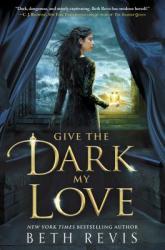
Nedra wants nothing more than to become a medical alchemist (think magical doctor). When the opportunity arises for her to spend one year at the best alchemical school in the country, she jumps at it, even though she knows it means leaving her twin sister and her parents – perhaps forever. Nedra quickly jumps to the top of her class, but when a plague breaks out and starts killing commoners, Nedra finds herself out of the classroom and into the hospital. As she studies the plague, she realizes that it might not be entirely natural. Anyone around her could be responsible for its rise, even those that she trusts the most and she turns to a forbidden form of alchemy, necromancy, to try to find the answers.
The book is narrated by two characters, Grey and Nedra. Nedra was an enthralling character. The book follows her as circumstances get progressively more dire and she does what she has to do to survive and keep her twin sister alive. Her inevitable descent into darkness felt earned and real. Grey is Nedra’s classmate and love interest, and I didn’t mention him in the synopsis because he was entirely unnecessary to the book. I think he just served to give an outsider’s perspective on Nedra, but his chapters read as wholly superfluous to me. Perhaps he’ll have more of a role in the sequel?
The alchemy and necromancy themselves were quite cool, aside from the cruelty to rats. The cruelty is addressed and makes sense (one could argue that we use lab mice in a similar fashion), but might be upsetting to animal lovers. The first part of the book, while not fast paced, was still fun to read as we got to hang out with Nedra quite a bit in the hospital and learn about her craft and motivations. As she experiments more with necromancy, the book gets twisty and dark, and I really enjoyed the ending. There are also some fun political machinations and a revolution brewing in the background, all of which add to the immediacy of later plot points.
If you enjoyed a good villain origin story, such as Marie Lu’s The Young Elites, Tamora Pierce’s Tempests and Slaughter or the TV show Breaking Bad, you should give this book a read. I enjoyed it, and I think I’ll like the sequel even more when it comes out in a year or so. 3 stars.
Thanks to Razorbill and Netgalley for the eARC, which I received in exchange for an unbiased review. Give the Dark My Love will be available for purchase on 25 September, but you can put your copy on hold today!
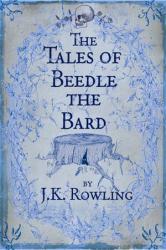
"The Tales of Beedle the Bard" is a collection of bedtime stories from the Wizarding World, with commentary from Albus Dumbledore in between. This book was amazing! I loved getting a new perspective of the Wizarding World, even after the end of the Harry Potter series. I also enjoyed getting to read the stories that were mentioned in the series, such as Babbitty Rabbitty and the Cackling Stump. It is like a little taste of Hogwarts that will make you homesick. Each story is captivating and full of J.K. Rowling's trademark wit.
I would recommend this to people who love Harry Potter and want to return to the Wizarding World one more time.
Grade: 12
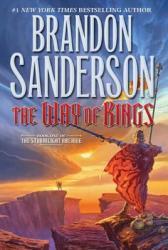
***THIS BOOK WAS RECEIVED FROM THE PUBLISHER***
I’ve only recently started reading Brandon Sanderson's books, but I’ve liked what I’ve read so far. I started out with Warbreaker , which was a relatively light fantasy novel when compared to the hefty tome that is The Way of Kings. While I loved the moderate pace that Warbreaker moved at, I instinctually knew that most “high fantasy” books are usually bogged down with exposition and world-building. The Way of Kings is certainly a “high fantasy,” which makes me wonder if perhaps Sanderson tried to do too much in this first volume of his newest series.
The Way of Kings follows about three main storylines but could have potentially gotten away with two of them, even if the one that could be easily cut—the Soulcaster theft storyline—had some of my favorite characters in it. I could also see the plotline being pared down to the one following Kaladin (who appears in each of the parts) since a lot of the “royal” plotline mostly just provided the world-building and exposition needed to ground the reality of the setting. In the end, this is just three books intertwined together to make one big book.
Perhaps because of its length, it took me the better part of eight months to finish reading The Way of Kings. Granted, I mostly only read it on my Kindle when I was flying somewhere, but I wasn’t necessarily drawn to keep reading once I returned home. All this being said, the magic system is well-developed, the world is creative and rich with details, and (most of) the characters are incredibly entertaining. Under different circumstances, I’d give my rating an additional half a star, but since reading it felt a bit more like work than entertainment, I’ll leave it where it is.
A creative “high fantasy” that perhaps bites off more than it can chew, I give The Way of Kings 4.0 stars out of 5.
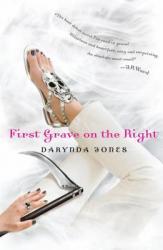
This book is the first of a 13 book series and it is FANTASTIC!!!!! It is hilarious, the characters are very well developed. The story line is very intriguing as well as entertaining. All around this book is a great mix of romance (beware it seems a little surprising how descriptive it is), supernatural and comedy!!
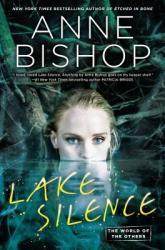
This is the first book in another story arc that takes place in the world of "the others", laid out and told from a different perspective in the Meg and Simon series beginning with Written in Red. Lake Silence takes place in another town in the world of "the others" with a whole new cast of characters and problems to solve. Anne wrote this story from the view of an ordinary woman who has survived being married to a verbally abusive husband, the divorce and now the betrayal by the same dirt bag. As a consequence, this story has real human depth without all the self pity one would expect of such a perspective, and instead shows how the problems are handled from flexibility and strength, assisted by truly helpful friends, human and "other". The story is well told and I've re-read it several times waiting for the follow on book, Wild Country. I recommend this book as a story the reader can "sink into" and identify with from multiple points of view.
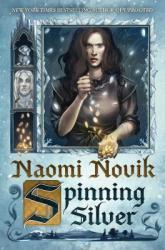
***THIS BOOK WAS RECEIVED FROM THE PUBLISHER***
About seven years ago, there seemed to be a renaissance of fairy tale retellings and reimagining that swept through popular culture. From television shows like Once Upon a Time and Grimm to movies like Snow White and the Huntsman (2012) and Mirror Mirror (2012) to the books of Melanie Dickerson, it seemed that wherever you turned, you could find someone’s different take on classic fairy tales. While perhaps a little outside this bubble of pop culture, Spinning Silver has the benefit of standing out in a field of genre books that seems to have cooled in recent years.
Based partially on the story of Rumpelstiltskin, author Naomi Novik has masterfully combined elements of Jewish and Russian folklore to reimagine this story from a somewhat more modern perspective while also maintaining its fairytale settings and tropes. If anything, her strong and independent female characters highlight how chauvinistic the original fairy tales seem when compared to the culture we’re living in today. I appreciated how smart the story is, taking the concept of “turning silver into gold” from a merely economical standpoint and turning it on its head by adding in fantastical elements more akin to alchemy.
While the point of view of this book jumped around from a few of the characters, I found the interconnectedness of their stories to be incredibly well done. I probably would have left out the old woman’s POV, since it didn’t add anything other than some unnecessary backstory, but other than that, each character’s storyline had its own tone, challenges, and uniqueness to make the entire plot a well-rounded affair. Writing the story in this way helped to humanize antagonists, provide the terror of poverty, and show plenty of character growth throughout the characters. Even the fact that the “simple” solution of the climax wasn’t the best solution for the characters speaks to the depth of thinking that went into this brilliant plot.
An intelligent and well-written fairy tale reimagining, I give Spinning Silver 4.5 stars out of 5.
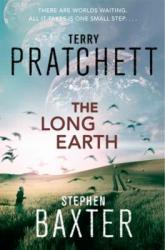
Having read a few of Sir Terry Pratchett's books before, I am no stranger to the randomness of his writing style. Usually, he has some character or object that just doesn’t fit in a normal narrative, but he manages to work it in with an explanation that’s both natural and makes sense. However, this only works if Pratchett has control over the entire story. Unfortunately, as is the case in The Long Earth, the randomness that Pratchett brings to the table sticks out like a sore thumb from the rest of the mostly sci-fi story. For instance, does an artificial intelligence have to be a reincarnated Tibetan motorcycle repairman? If you want to take the story seriously, probably not.
In the end, this book seems to be mostly written by Stephen Baxter, with only a smattering of Pratchett’s charm thrown in occasionally for levity. I haven’t read any of Baxter’s other books, but I’m not sure if I’d want to, considering how The Long Earth was put together. First off, the entire book seems to be an exposition dump about “stepping,” which is the process wherein people can move from one parallel universe into another. None of the narratives seems dedicated to anything in particular. With no goal in mind, the story will often get distracted away from the main character during little vignettes that explore some of the potentials of the multiverse theory presented therein.
I did appreciate the amount of thought that went into the limitations and peculiarities of stepping between parallel Earths, but when that’s the only focus of the book, it tended to get repetitive. So often, I’d be listening to this audiobook and realize that there wasn’t much dialogue between these characters; they were mostly spewing out more explanation about the Long Earth in a series of expository dumps of information.
A book full of sci-fi exposition, I give The Long Earth 2.0 stars out of 5.
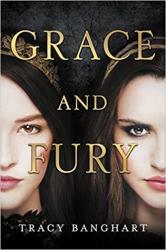
Serina has aimed to be a Grace her whole life. In a world where women aren’t allowed to learn to read, becoming one of the heir’s paramours is pretty much as good as it gets – otherwise she’ll be relegated to a life of work in a factory. When she’s selected to go to the palace to be considered for a position as a Grace, she’s beyond thrilled and takes her younger sister Nomi along as a handmaiden. But neither Serina nor Nomi are prepared for the backstabbing political machinations at large in the palace, and soon both girls will find their world turned upside down.
This was sold to me as The Selection meets The Handmaid’s Tale, which sounded super intriguing as I enjoyed those books for very different reasons - guilty pleasure and biting social commentary respectively. And one of the girls does have an arc that very much meets that description. Interestingly, I didn’t really like her story. Most of that has to do with the fact that we’re told that the character is smart and rebellious, but we’re mostly just shown her swanning around the palace making stupid decisions. The other sister has an arc that’s more Beauty Queens meets The Hunger Games, and I really enjoyed that one. It was a much more unique story, and the character experienced a lot of growth.
Because the sisters’ paths diverge, I feel that it’s fairly safe to say that at least one of the two stories will appeal to most YA dystopia and fantasy readers. If you like your dystopia with a dose of feminism, you’ll enjoy this slightly derivative series opener. I liked it. 3 stars.
Thanks to Little, Brown and Netgalley for the eARC, which I received in exchange for an honest review. Grace and Fury will become available for purchase on 31 July, but you can put your copy on hold today!
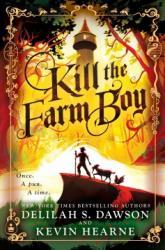
It took me a while to review this book because I couldn’t figure out exactly how to rate it. This novel is a pun filled fantasy adventure that pokes fun at the traditional fantasy quest. It involves magic, elves, a dark lord name Toby, sleeping maidens, a sand witch named Grinda, a talking goat named Gustave, fairies, a bunny bard named Argabella, a female warrior named Fia, a rogue name Poltro, and a harrowing danger filled quest to cure the dead-ness of a farm boy name Worstley, killed at the beginning of this book, that was destined to fulfill a great destiny …. or so we thought.
While at times this book was funny, I particularly enjoyed the details of how the world was described, for example when the enchanted castle and the maids were being described at the beginning of the book, particularly the last line. “There was also an abundance of portent swaddled about the place. Oodles of it. A surfeit, even. Something would go down there soon. But for now, the lady slept. And drooled a little, probably.” Or the dark lord’s constant obsession with cheese and crackers throughout the book.
Other times, I think the humor went over the top, which was not a particularly big selling point for me and leaves a somewhat sour taste in my mouth. For example, when our heroes arrive at the hut of the healer and Agrabella first wakes up after being healed. “In this case with her eyes shut, Argabella had to assume she was being licked across the face by a troll with gingivitis who’d recently partaken of fresh garlic and sardines and possibly eaten another, even sicker troll for breakfast. Her eyes burst open… She soon realized that this was because she was staring into someone’s extremely furry armpit” Or maybe it was the fact that books with tropes and puns are just not the type of books I am particularly drawn too or like. However, I do appreciate and like each of the character’s own inner dialogue as they wrestle with their feelings and other issues throughout their journey together. For example, when the warrior realizes she love’s the bunny bard, “She realized that even more than roses, even more than a proper set of armor, she wanted to be kind and generous and the whole range of happy adjectives to this truly unique woman for a long, long time.”
Overall I think this books was well written, and at times funny, it takes a traditional subject, fantasy quests, and turns it into something new entirely. While this book wasn’t for me particularly, I would recommend it for anyone who loves, Monty Python and the Holy Grail, The Princess Bride.
the movie Space Balls, or anything with wacky humor. This book comes out today so put a copy on your holds list! Thank you to Negalley and the publisher Del Rey for a free e-arc of this book in exchange for an honest review.



 Ruth Holley Library will be temporarily closed for approximately one week starting Mon., Dec. 2 to complete roof repairs.
Ruth Holley Library will be temporarily closed for approximately one week starting Mon., Dec. 2 to complete roof repairs.